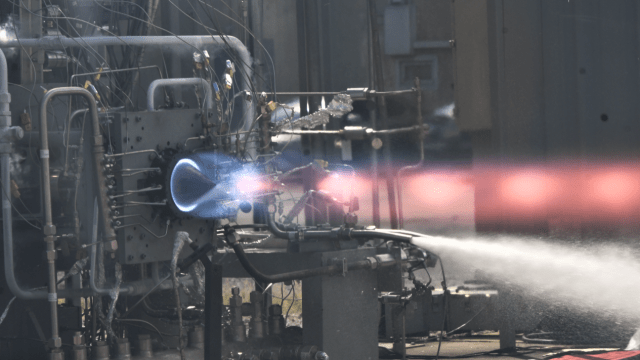As NASA gears up for a return to the Moon with the Artemis missions, the administration has announced that its researchers have successfully developed and tested a new type of supersonic rocket engine called a rotating detonation rocket engine.
The rotating detonation rocket engine, or RDRE, generates thrust with detonation, in which a supersonic exothermic front accelerates to produce thrust, much the same way a shockwave travels through the atmosphere after something like TNT explodes. NASA says that this design uses less fuel and provides more thrust than current propulsion systems and that the RDRE could be used to power human landers, as well as crewed missions to the Moon, Mars, and deep space.
NASA’s test of the RDRE featured 3D-printed parts made with a copper-alloy called GRCop-42, which the agency developed. During the test, the rocket withstood the high temperatures and pressures generated by the detonation, producing over 4,000 pounds (1,814 kilograms) of thrust for almost a minute.
NASA argues that the new rocket design can move more mass into deep space with less fuel, potentially making space travel more sustainable. With the successful tests, NASA engineers are now working on a fully reusable 10,000-pound (4,536 kilogram) RDRE to compare its performance to traditional liquid rocket engines.
NASA’s development of the RDRE signals the space administration’s interest in developing more efficient rocket technology for space travel. Earlier this week, NASA announced a joint collaboration with DARPA to develop DRACO, short for Demonstration Rocket for Agile Cislunar Operation. DRACO would utilise a nuclear thermal engine for interplanetary travel, reducing travel time with a more efficient propulsion technology.
More: SpaceX Completes First Wet Dress Rehearsal of Starship Megarocket
